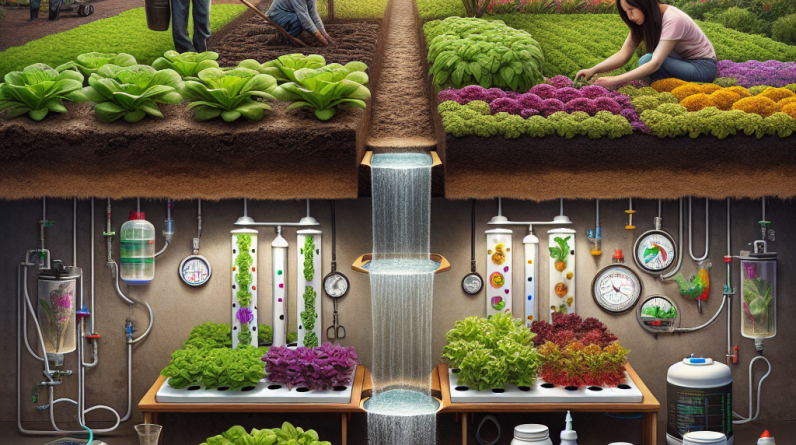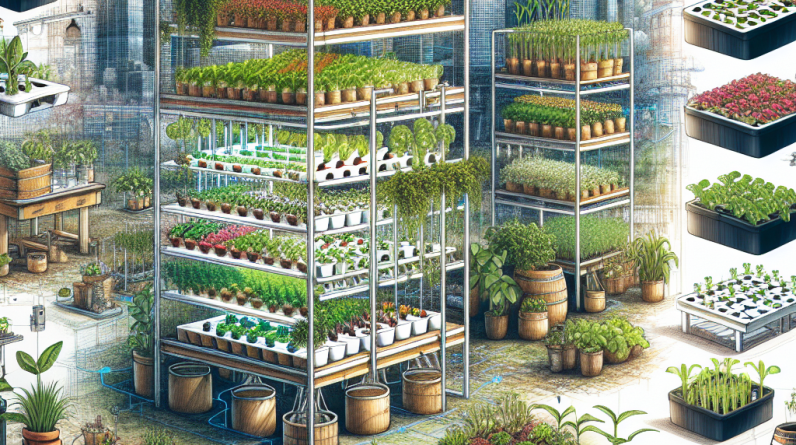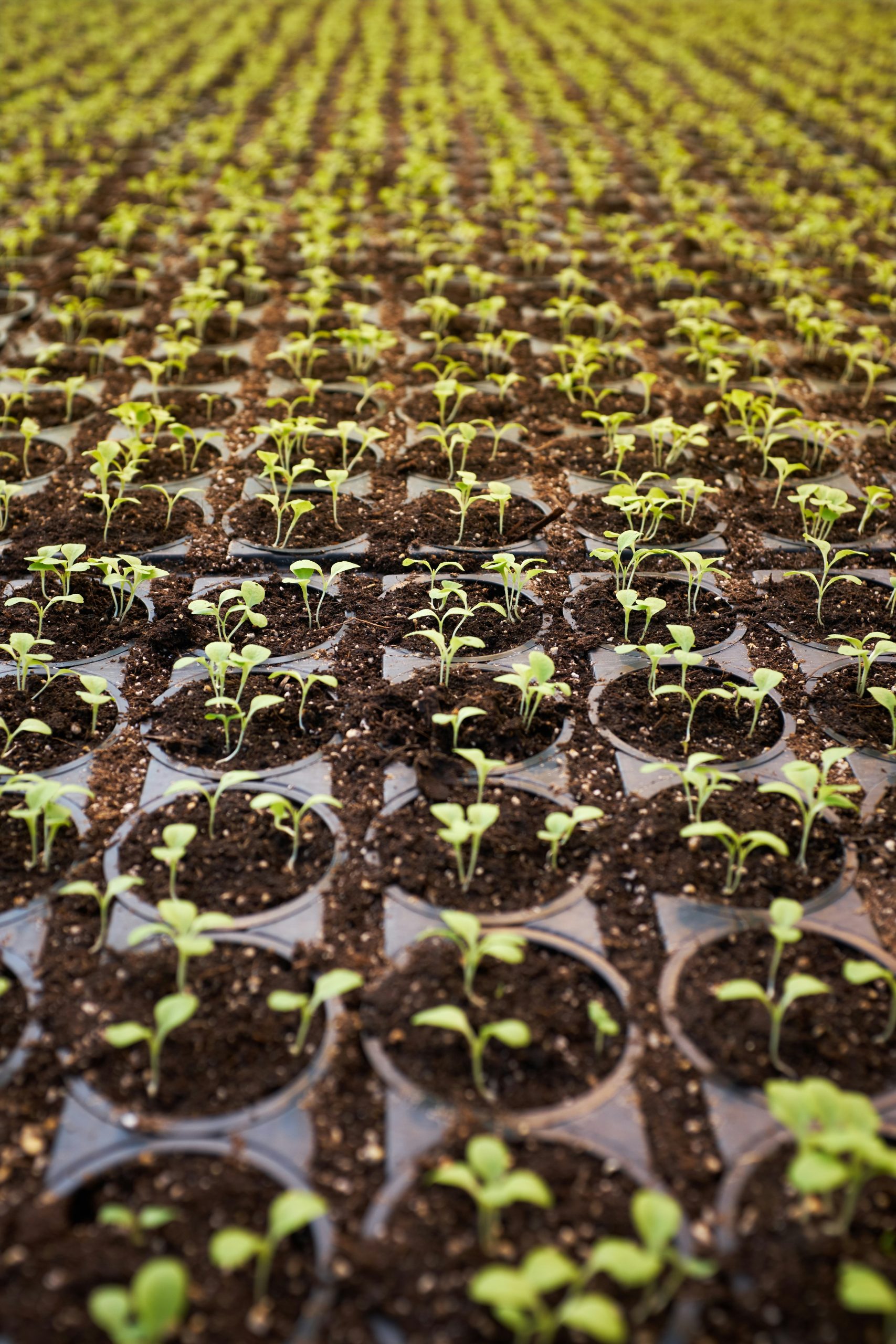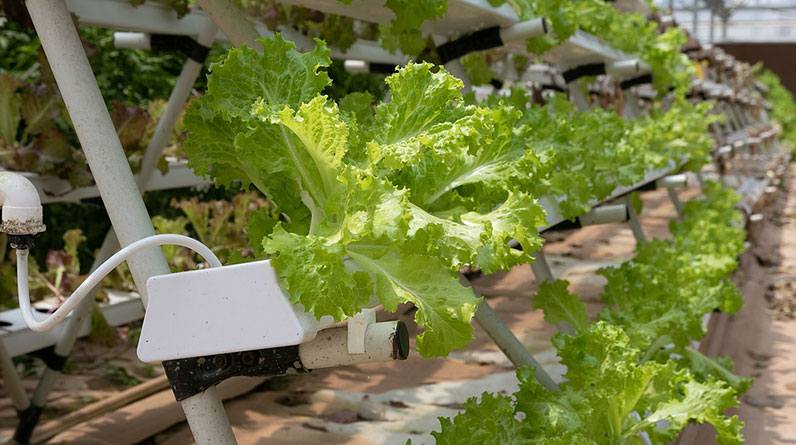
Shifting from traditional soil gardening to hydroponics can be a thrilling adventure. I can tell you that, having gone through it myself, the process can be both rewarding and a bit daunting. But don’t worry! I’m here to walk you through the five major areas that I found essential when making this transition.
Understanding Hydroponics Fundamentals
What is Hydroponics?
When I first heard of hydroponics, I thought, “That’s just for those high-tech farms, right?” But hydroponics is essentially growing plants without soil! Instead, plants are cultivated in nutrient-rich water solutions. Sounds cool, right? Each plant receives precisely what it needs, making this method super efficient.
There are different hydroponic systems, such as nutrient film technique (NFT), deep water culture (DWC), and aeroponics. Each has its own benefits and challenges. Spending time understanding these systems helped me be more versatile in my approach and find what suited me best.
Once you grasp the fundamentals, you’ll see why hydroponics might just be the future of gardening. It’s efficient, space-saving, and produces healthier plants! Just imagine plucking fresh basil or crisp lettuce right out of your setup.
Benefits of Hydroponics
One of the standout benefits I discovered was yield. Hydroponically grown plants can yield up to 30% more than traditional soil plants! That means more veggies for less effort, which I am all about. The controlled environment also leads to fewer pests and diseases, so I found I could spend less time worrying about bugs ruining my crops.
Another cool benefit? You can grow plants in places where soil gardening wouldn’t be feasible—like balconies, basements, or urban rooftops. I started my mini-garden in my apartment, and let me tell you, it’s been a blast experiencing a bit of nature in my urban jungle.
Lastly, with hydroponics, you can take control over what goes into your plants. This means no pesticides, and with the right nutrients, everything is organic. Who doesn’t want to eat healthily, especially when you grow it yourself?
Challenges to Expect
Now, I don’t want to sugarcoat it—transitioning to hydroponics isn’t without its challenges. One of the biggest obstacles I faced was understanding nutrient balance. Different plants require different nutrients, and figuring out what mix works best can feel like a chemistry class.
Another hurdle is the initial setup cost. A hydroponics system can be a bit pricey, especially when you’re just starting. But I promise it pays off in the long run. I gradually invested in my setup and learned as I went along, which made it more manageable.
Last but not least, I had to get used to monitoring my system regularly. Hydroponics requires a bit more attention compared to soil, but once you get into a routine, it can become second nature!
Choosing the Right Hydroponic System
Evaluate Your Space
If you’re like me, space is often at a premium. Before choosing a hydroponic system, I measured my available area. This will help determine which system can fit while allowing for optimal plant growth. Some systems, like vertical setups, are perfect for small spaces.
Also, consider the light situation. My first system didn’t have ample light, which slowed down plant growth. I learned that investing in grow lights can make a world of difference, especially if you don’t get enough natural sunlight.
Don’t forget about accessibility. You want to create a garden that’s enjoyable to work with. Ensure you can reach your plants easily, and that any required equipment is within a comfortable range.
Decide on the Type of Plants
Next up, consider what you want to grow. I started with herbs and leafy greens since they are less demanding and thrive well in hydroponic systems. As I got more comfortable, I expanded to tomatoes and peppers, which took a bit more finesse but were totally worth it!
Research is your best friend here. Some plants are easier to grow hydroponically than others. Know your favorites and start there. The feeling of harvesting something you grew yourself? It’s unbeatable!
Also, keep in mind the growth cycles of your chosen plants. Some may require longer time frames for yield, so plan accordingly. It’s about patience, folks—trust me!
Budgeting for Your System
Ah, the dreaded budget talk—everyone’s favorite, right? Hydroponic systems aren’t exactly pocket change, so laying out a budget is crucial. I began by outlining the essentials: the hydroponic system, nutrient solutions, lights, and grow media. This helped me figure out how much I needed to invest upfront.
But don’t worry too much—there are plenty of affordable options. I chose a simple deep water culture system to begin with, which kept costs manageable while still being effective.
Consider ongoing costs, too, like buying nutrients and maintenance supplies. Having a plan can relieve stress and keep your hydro journey on track.
Setting Up Your Hydroponic System
Gathering Your Materials
After deciding on the system and plants, it was time to gather materials. First thing I learned? Don’t skimp on quality. I made that mistake once, and it led to a disaster. So, I spent a bit more on a reliable pump and tubing to ensure everything worked flawlessly.
Next, ensure you have your nutrient solutions ready. Depending on the plants, you’ll need specific mixes. I found lots of DIY recipes online and even made some of my own. It’s pretty rewarding to see your own mix do wonders.
Also, ensure you have a clean, suitable location to set up. An organized space can lead to better management and reduce the chances of error or contamination. It also just feels good to garden in a neat area!
Assembling Your System
Putting everything together was vast fun! I read through instructions but still gave it my personal touch. Make sure to double-check the connections, as water leaks can create chaos quickly. I had one mishap where I didn’t tighten a hose, and let’s just say: water everywhere!
After setting it up, I made sure to run a test before planting anything. This little hack can save you a ton of trouble later on. Check for leaks, pump functioning, and nutrient flow. You want to get it right!
Finally, once everything looks good, it’s time to make your first plantings. It’s like starting a new adventure, so enjoy the process!
Managing the System
Adjusting to the new routine was the biggest learning curve for me. I had to monitor pH levels, nutrient concentrations, and water levels regularly. I started keeping a log, which helped me track what worked and what didn’t. It’s amazing to see your progress over time!
Another tip: check for pests and diseases often. Hydroponics can minimize these issues, but they can still creep in. Regular checkups can keep your plants thriving and happy.
Lastly, don’t forget to celebrate each harvest! Whether it’s a handful of herbs or a full batch of tomatoes, you’ve earned it. It’s these moments that make the effort totally worthwhile.
Maintaining Your Hydroponics Garden
Regular Nutrient Checks
Once your system is running smoothly, it’s essential to keep a close eye on nutrient levels. I can’t stress enough how important this is. Plants can only grow well if they have the right balance of nutrients. Testing kits are your best friends here. They help you know what’s missing so you can replenish it.
In my experience, a good routine is to check every week. I adjust mixes as needed, and you will start to see patterns of what your plants react well to. It’s all about learning your plants’ unique needs!
I also found it helpful to start with lower nutrient levels and gradually increase them. Too much too fast can shock your plants. Patience is key, trust me!
Cleaning and Preventive Maintenance
Keeping the system clean is essential for the health of your plants. I make it a habit to flush the system every couple of weeks to prevent buildup of residue and algae. This small action can make a big difference in plant health.
I also regularly cleaned anything that could compromise the environment—like the reservoir, pots, and equipment. Don’t let dirt and buildup sneak up on you!
You’ll want to constantly check for blockages or leaks too. Trust me; catching these early saves you from larger headaches down the road.
Documenting Your Journey
Lastly, I cannot tell you how rewarding it is to document your journey. I took pictures, kept notes, and even shared my experiences with friends. It kept me motivated and accountable!
Plus, reviewing my progress showed me how far I had come. There’s something incredibly fulfilling about watching those tiny seeds turn into flourishing plants. Who wouldn’t want to brag a little?
So, immerse yourself in this process, and don’t forget to enjoy every step of the way!
Frequently Asked Questions
1. What plants are best for beginners in hydroponics?
Start with herbs and leafy greens like lettuce, spinach, and basil. They are easier to grow, and you’ll get faster results, which is motivating!
2. How often should I check my nutrient levels?
I recommend checking every week, especially after planting new seeds, to ensure they have everything they need to thrive.
3. Is hydroponics really more productive than soil gardening?
Yes! Hydroponics can yield much more from less space and with fewer pests and diseases, making it a great option for many growers.
4. Can you grow fruit-bearing plants hydroponically?
Absolutely! Tomatoes, peppers, and strawberries are all great options. Just be prepared for a bit more maintenance and monitoring.
5. What are the initial costs associated with starting a hydroponic garden?
The costs can vary based on the system you choose, but expect to spend on the hydroponic setup, nutrients, lights, and maintenance supplies. It’s an investment, but worth every penny!
Transitioning to hydroponics has been a journey filled with learning, excitement, and fresh flavors. I hope this guide helps you on your path to becoming a hydroponics expert! Remember, it’s all about enjoying the process and nurturing your love for gardening.
Related Content
- 10 Effective hydroponic greenhouse ideas to maximize yields in 2025
- The Ultimate 2025 Guide to the Best Hydroponic Garden Tower Strategies
- The Ultimate Guide to 10 Effective hydroponic gardening indoors Strategies for 2025
- How to Monitor Hydroponic Nutrient Levels Accurately
- Growing Without Soil is the Future of Farming







